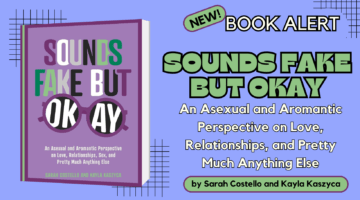Americans’ Attitudes Toward Bisexuals: Results From a National Survey
December 7, 2016 by Justin Lehmiller
Researchers and public polling firms alike have extensively surveyed Americans about their attitudes toward gays and lesbians in recent years. The results of their work have shown that attitudes toward homosexuality have become far more favorable over time. Unfortunately, however, in almost all of these surveys, attitudes toward bisexuals have been neglected. As a result, we don’t really know that much about what Americans’ attitudes toward bisexuality look like today, nor can we say much about the degree to which they might have changed over time.
Fortunately, a new study published in the journal PLOS ONE offers some insight. In it, researchers consider results from the 2015 wave of the National Survey of Sexual Health and Behavior. This consisted of a national U.S. probability sample of approximately 3,000 adults (age 18+) that was designed to be representative of the population.
Survey participants completed two versions of the Bisexualities: Indiana Attitudes Scale (known as BIAS for short): one looking at attitudes toward female bisexuality and the other looking at attitudes toward male bisexuality. In the table below, you can see the items for each version of the scale, along with the percentage of participants who agreed/disagreed with each response option. The items looking at male bisexuality are on top, while the items looking at female bisexuality are on the bottom.

As you can see in this table, attitudes toward male and female bisexuals appear to be fairly similar; however, there was a small but statistically significant difference in the overall average scores, with attitudes being more negative for bisexual men compared to bisexual women. The other thing that stands out in this table is that “neither agree nor disagree” was the single most common response option chosen for each item in both versions of the scale.
The researchers also found that attitudes toward bisexuality depended upon a lot of demographic characteristics, including age, race, gender, education, income, and sexual orientation:
- Participants under age 25 had more positive attitudes than those over 25.
- In terms of race, White participants had the most positive attitudes, while Black participants had the most negative attitudes.
- Male and female participants did not differ in terms of how they evaluated bisexual men; however, female participants had more positive attitudes toward bisexual women than did male participants.
- Participants who had more than a high school education, as well as those who made more than $25,000/year in income, had more positive attitudes toward bisexuals.
- People who were themselves sexual minorities had more positive attitudes toward bisexuality than did heterosexuals.
Generally speaking, these demographic findings are pretty consistent with previously published research looking at attitudes toward bisexuality, so there isn’t really anything surprising or unusual to note here.
So what can we conclude from all of this? Compared to the last national probability survey that looked at attitudes toward bisexuality (which was published in 2002 and only included heterosexual participants), it appears that Americans’ attitudes toward bisexuality have improved. Thus, at the same time as Americans have become more accepting of homosexuality, they also appear to have become more accepting of bisexuality.
However, there’s an important caveat to this: attitudes toward bisexuality haven’t really shifted to the positive side like they have in the case of homosexuality. Instead, they’ve just gone from negative to neutral. The authors point out that this shift to neutral can be interpreted in a lot of different ways (e.g., being unsure, not caring, feeling ambivalent, being unfamiliar). Thus, although there has definitely been a shift in attitudes toward bisexuals from negative to neutral, more research is needed to understand what this shift really signifies.
Want to learn more about Sex and Psychology? Click here for more from the blog or here to listen to the podcast. Follow Sex and Psychology on Facebook, Twitter (@JustinLehmiller), or Reddit to receive updates. You can also follow Dr. Lehmiller on YouTube and Instagram.
To learn more about this research, see: Dodge, B., Herbenick, D., Friedman, M. R., Schick, V., Fu, T. C. J., Bostwick, W., … & Sandfort, T. G. (2016). Attitudes toward Bisexual Men and Women among a Nationally Representative Probability Sample of Adults in the United States. PloS one, 11(10), e0164430.
Image Source: Wikimedia Commons

Dr. Justin Lehmiller
Founder & Owner of Sex and PsychologyDr. Justin Lehmiller is a social psychologist and Research Fellow at The Kinsey Institute. He runs the Sex and Psychology blog and podcast and is author of the popular book Tell Me What You Want. Dr. Lehmiller is an award-winning educator, and a prolific researcher who has published more than 50 academic works.
Read full bio >


